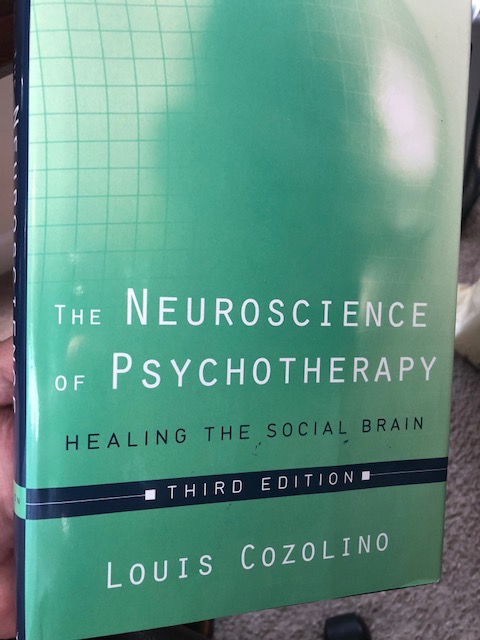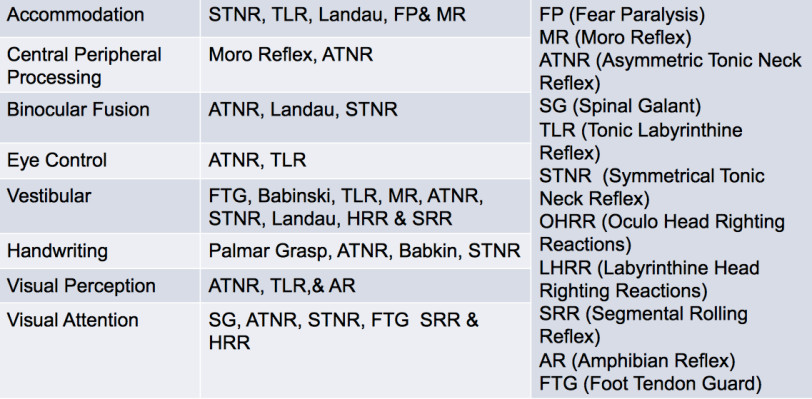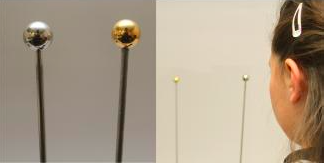
Any form of therapy is more effective when we taken into account the interconnectedness of the patient’s mind, brain and body. In that regard, I’m a big fan of Louis Cozolino, Ph.D. Anything “The Coz” writes, I’m reading. This includes his books The Making of a Therapist, The Neuroscience of Human Relationships, The Healthy Aging Brain, and Why Therapy Works. While reading the 3rd edition of The Neuroscience of Psychotherapy, his treatment of primitive reflexes jumped off the page. It resonated because he refers to them as brain stem/limbic reflexes, the so-called bottom-up or reptilian brain influences which are mature at birth, in contrast to cortical or top-down influences which are immature at birth and continues to develop throughout adulthood. Consider the following:
“An example of this is the development of the fine motor movements between the thumb and forefinger that are required to hold a spoon. Primitive grasping reflexes allow only for the spoon to be held in a tight fist, rendering useless as a tool. The developing cortex enables the grasping reflex to be inhibited, while cortical networks dedicated to finger sensitivity and hand-eye coordination mature. Thus, a vital aspect of the development of the cortex is inhibitory – first of reflexes, later of spontaneous movements, and even later of emotions and inappropriate social behavior. Only through repeated trial-and-error learning are early clumsy movements slowly shaped into functional skills. Children (and their brains) intuitively know this and will resist being held back or helped too much. When we attempt to help, a child’s protest of “Let me do it!” reflects instinctual wisdom of the importance of trial-and-error learning in the growth of neural networks.”
Patti Andrich has developed an excellent eBook on primitive reflexes through Eyecarrot, based in part on a presentation given on neuro-motor maturity at a COVD meeting a few years back.


As a quick aside, a nice resource for parents on primitive reflexes, linking them to vision and learning, is on the web at www.solvelearningdisabilities.com.
Once primitive reflexes are appropriately integrated at the neuro-motor level, it should be easier to cultivate inhibition in the vision therapy room. Here is an example that is one of my favorite procedures, and it can be equally valuable as a diagnostic or progress evaluation procedure.

Using a set of Wolff Wands, tell the patient that you want her to look at either the silver or the gold ball, but only to look at it when you say that color. Initially just move the silver ball to obtain a baseline on how well the patient tracks with her eyes and inhibits motor overflow of the rest of the body on the z, x, y, oblique, and circular axes. After this has been done, say “gold” and the patient has to follow only the movements of the gold ball. Many patients with inhibitory control issues will have difficulty at the outset just following the color that you last called, and not looking at the other ball when it is first moved. For example, if you call out “silver” and hold it on the midline, but move the gold ball outward, the patient’s impulse will be to follow the movement of the gold ball rather than to maintain fixation on silver. The fun thing about this is that there are unlimited combinations that you can generate, and it takes significant visual-cognitive flexibility for the patient to toggle between the silver and the gold as you execute a variety of movements or non-movements between the two colors.
As you can imagine, developing inhibitory control has tremendous transfer effects to controlling one’s impulses outside of the therapy room, often lacking in children who have behavioral and learning issues. And as Dr. Cozolino notes, ABI including mTBI often sets the patient back in terms of inhibitory reflexes, and is another reason why we incorporate these approaches into therapy.
Keep the good articles coming
The Wolff Wand procedures are very similar to much of the work by Robert Pepper,OD, anti-saccades, etc. Great activities!
Len,
Reminding us of what we have forgotten, or at least has slipped from current use, is as important as all of the new information you send to us.
Gary